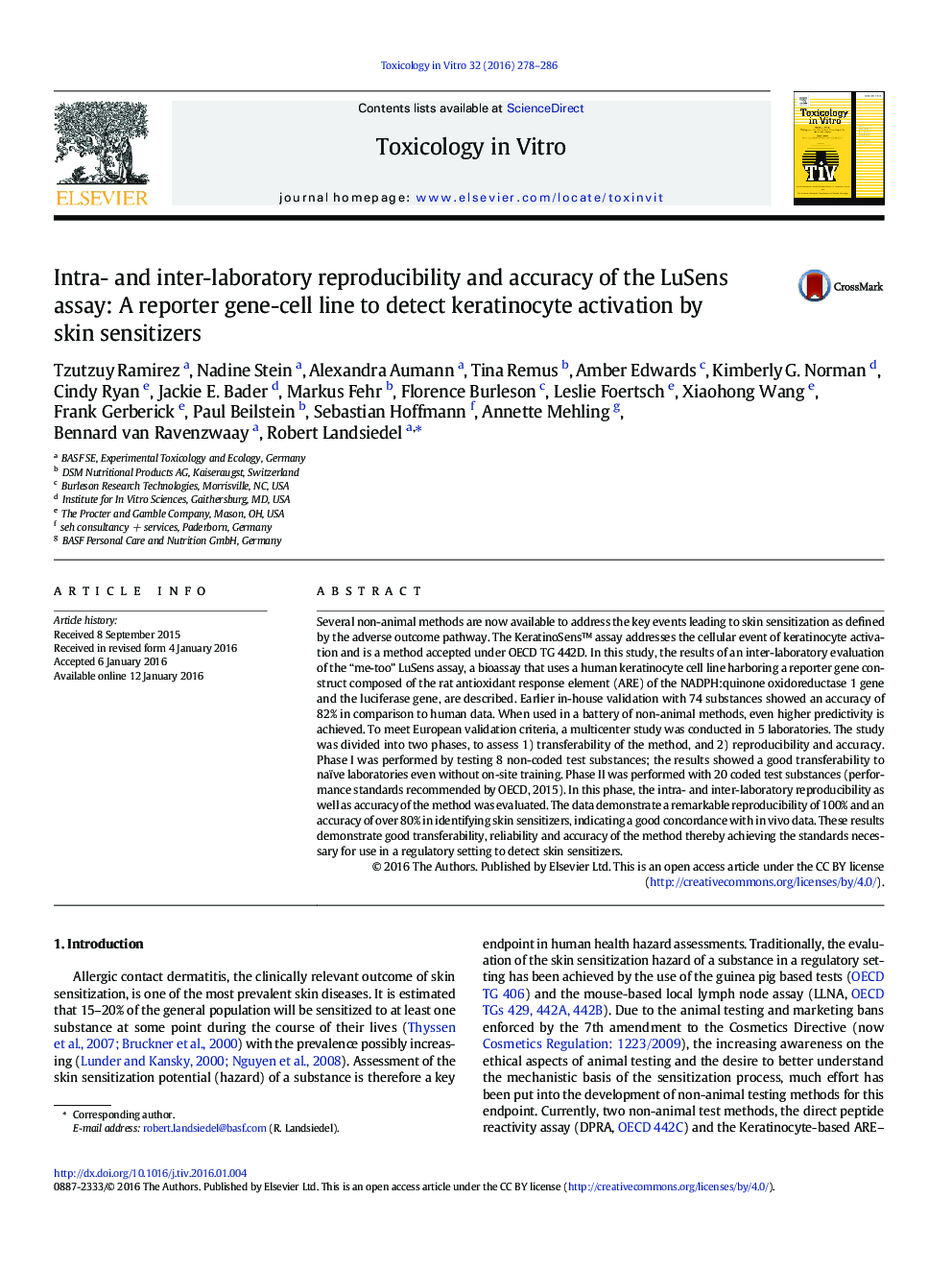| Article ID | Journal | Published Year | Pages | File Type |
|---|---|---|---|---|
| 5861267 | Toxicology in Vitro | 2016 | 9 Pages |
â¢Keratinocyte activation is a key event of the skin sensitization AOP.â¢ARE-Nrf2-luciferase methods are accepted under OECD 442D to address this key event.â¢LuSens is a human keratinocyte line with an ARE-Nrf2-luciferase reporter.â¢Results of an inter-laboratory evaluation conducted in five laboratoriesâ¢Reproducibility of 100% and accuracy in identifying skin sensitizers over 80%
Several non-animal methods are now available to address the key events leading to skin sensitization as defined by the adverse outcome pathway. The KeratinoSens⢠assay addresses the cellular event of keratinocyte activation and is a method accepted under OECD TG 442D. In this study, the results of an inter-laboratory evaluation of the “me-too” LuSens assay, a bioassay that uses a human keratinocyte cell line harboring a reporter gene construct composed of the rat antioxidant response element (ARE) of the NADPH:quinone oxidoreductase 1 gene and the luciferase gene, are described. Earlier in-house validation with 74 substances showed an accuracy of 82% in comparison to human data. When used in a battery of non-animal methods, even higher predictivity is achieved. To meet European validation criteria, a multicenter study was conducted in 5 laboratories. The study was divided into two phases, to assess 1) transferability of the method, and 2) reproducibility and accuracy. Phase I was performed by testing 8 non-coded test substances; the results showed a good transferability to naïve laboratories even without on-site training. Phase II was performed with 20 coded test substances (performance standards recommended by OECD, 2015). In this phase, the intra- and inter-laboratory reproducibility as well as accuracy of the method was evaluated. The data demonstrate a remarkable reproducibility of 100% and an accuracy of over 80% in identifying skin sensitizers, indicating a good concordance with in vivo data. These results demonstrate good transferability, reliability and accuracy of the method thereby achieving the standards necessary for use in a regulatory setting to detect skin sensitizers.
